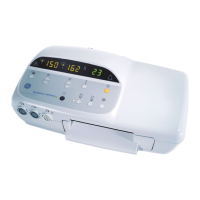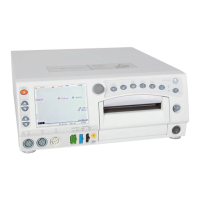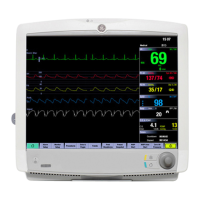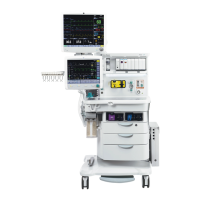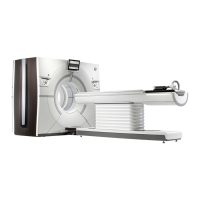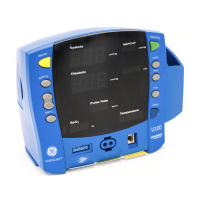6-32 120 Series Maternal/Fetal Monitor Revision B
2015590-001
Functional Checkout Procedure: Alarm Test
Alarm Test
This portion of the test ensures the integrity of the audio alarms and tests the alarm
limit software.
1. Connect the FECG/MECG adapter cable to the
FECG/MECG input receptacle
on the 120 Series Monitor.
2. Connect the Model 325 Simulator’s ECG sub-cable to the adapter’s
MECG
input.
3. Use the Trim Knob control to access the MHR/P Setup screen.
4. Set the MHR/P source to MECG.
5. Set the MHR/P high alarm limit value to 120 bpm.
6. Set the MHR/P low alarm limit value to 60 bpm.
7. Set the MHR/P audio alarm to ON.
8. Set the alarm volume to a level you can easily hear.
9. Exit the MHR/P Setup screen.
10. Access the Master Alarm Setup screen.
11. Set the re-alarm time to 30 seconds.
12. Exit the setup screen.
13. Set the switches on the Model 305 Input Simulator according to Table 6-7.
14. Using the simulator’s
Manual Adjustment knob, input an MECG signal of 119
bpm as indicated on the monitor. Verify that there is no alarm tone sounding
from the monitor’s rear panel speaker.
15. Using the simulator’s
Manual Adjustment knob, increase the MECG rate to
120 bpm. Again, verify that there is no alarm tone sounding from the rear panel
speaker.
16. Using the simulator’s
Manual Adjustment knob, increase the MECG rate to
121 bpm. Verify the following on the monitor:
The following alarm tone is emitted from the rear panel speaker: alternating
high/low tones until the alarm condition is removed (following steps.)
The MECG value flashes.
17. Depress the monitor’s front panel
Alarm Silence pushbutton and verify the
following:
The alarm tone is silenced.
The MECG value no longer flashes.

